
What Is the Difference Between a Trolley and a Hospital Bed?
📋 KEY TAKEAWAYS
| Feature | Hospital Beds | Medical Trolleys |
|---|---|---|
| Primary Purpose | Long-term patient care and comfort | Short-term transport and procedures |
| Duration of Use | Days to years | Minutes to hours |
| Comfort Features | Extensive (therapeutic mattresses, adjustability) | Minimal (thin padding, limited adjustments) |
| Mobility | Limited (movable but not designed for transport) | High (designed specifically for transport) |
| Height Adjustment | Yes - 7" to 30" range | Yes - typically 25" to 40" range |
| Price Range | $1,000-$5,000+ | $500-$3,000+ |
| Home Use | Common and practical | Rare and impractical |
Best for Long-Term Care: Icare Adjustable Electric Home Hospital Bed IC333 – Combines medical functionality with home-friendly design
Budget Option: Costcare Semi-Electric Bed B120C – Essential features at $1,068
For Bariatric Patients: Full Electric Bariatric Hospital Bed Costcare B142C – Supports up to 600 pounds with full electric functions
What is the difference between a trolley and a hospital bed? Though both are wheeled medical equipment found in healthcare settings, they serve distinctly different purposes.
Hospital beds are designed for long-term patient care, comfort, and therapeutic positioning, while medical trolleys (also called stretchers or gurneys) are primarily designed for short-term patient transport and procedures.
For patients needing extended care, hospital beds offer superior comfort, positioning options, and safety features. For those with special needs, options like bariatric hospital beds provide enhanced support for larger patients. Additionally, hospital bed mattresses are designed for pressure relief and long-term comfort, unlike the thin padding found on most medical trolleys.
This comprehensive guide examines the key differences between these two types of medical equipment, helping you understand which is appropriate for various healthcare needs, settings, and patient requirements.
Primary Purpose and Design Differences
The most fundamental difference between trolleys and hospital beds lies in their intended purpose and resulting design features.
Hospital Beds: Long-Term Care and Comfort
Hospital beds are fundamentally designed for extended patient stays and care. Their design prioritizes:
- Patient comfort: Engineered for extended periods of use with proper support surfaces
- Therapeutic positioning: Multiple articulation points for specific medical positioning
- Caregiver access: Features that facilitate care delivery over time
- Clinical versatility: Adaptable for various medical conditions and treatments
- Safety features: Rails, alarms, and other protections for vulnerable patients
Hospital beds like the Costcare Full Electric Hospital Bed B135C ($1,298) feature full electric adjustability for head, foot, and height positions, allowing customization for various patient needs.
Medical Trolleys: Transport and Procedures
Medical trolleys (stretchers or gurneys) are primarily designed for:
- Patient transport: Moving patients between departments or facilities
- Emergency procedures: Quick access for urgent medical interventions
- Diagnostic positioning: Limited adjustments for imaging and testing
- Temporary holding: Brief patient stays while awaiting treatment
- Space efficiency: Narrower design for navigating hallways and doors
Medical trolleys typically feature:
- High-quality casters for smooth movement
- Push handles for easy maneuvering
- Quick-drop side rails for emergency access
- IV poles and oxygen tank holders
- Trendelenburg positioning for emergencies
| Design Feature | Hospital Beds | Medical Trolleys |
|---|---|---|
| Width | 36"-60" (standard to bariatric) | 24"-30" (narrower for transport) |
| Length | 80"-88" (standard) | 72"-84" (variable) |
| Mattress Thickness | 6"-8" therapeutic mattress | 2"-4" padding |
| Wheel Design | Smaller, lockable casters | Larger, high-mobility casters |
| Side Rail Design | Full or half-length, primarily for fall prevention | Collapsible, full-length for transport safety |
| Frame Construction | Heavier, more robust | Lighter, more maneuverable |
Mobility and Transport Capabilities
The mobility characteristics of trolleys and hospital beds reflect their different intended uses.
Hospital Beds: Limited Mobility by Design
Hospital beds like the Medacure Ultra Low Hospital Bed ULB7/30-CLS ($1,741) have some mobility features but are primarily designed to remain stationary:
- Smaller casters: Typically 3"-5" diameter for occasional movement
- Locking mechanisms: Designed to remain securely in place during use
- Higher weight: 250-500 pounds makes frequent movement impractical
- Limited steering: Basic directional capability without precision
- Room-to-room movement: Possible but not designed for long distances
Hospital beds are moved primarily for:
- Room cleaning and maintenance
- Facility reorganization
- Initial placement and setup
- Rare patient relocation needs
Medical Trolleys: Engineered for Transport
Medical trolleys are specifically engineered for frequent and efficient transport:
- Large casters: 5"-8" diameter for smooth rolling over thresholds
- Fifth wheel steering: Central fifth wheel for precision directional control
- Push handles: Ergonomically designed for staff to maneuver easily
- Lighter weight: 150-300 pounds for easier movement
- Bumper systems: Protection for walls and doorways during transport
- Brake systems: Central braking for quick stops and securing
Trolleys are designed for regular movement through:
- Hospital hallways and elevators
- Between departments
- Into diagnostic rooms
- Emergency transport
- Ambulance loading/unloading
Adjustment and Positioning Capabilities
Both equipment types offer positioning capabilities, but with significant differences in purpose and range.
Hospital Beds: Therapeutic Long-Term Positioning
Hospital beds like the Trendelenburg Costcare Adjustable Medical Bed B337 ($1,675) feature comprehensive position adjustments for therapeutic purposes:
- Multiple articulation points: Head, upper back, lower back, knees, feet
- Precise angle control: Specific degree adjustments for therapeutic positions
- Position memory: Saving frequently used positions for consistency
- Height range: Typically 7"-30" for transfer safety and caregiver access
- Cardiac chair position: Specialized positioning for cardiac patients
- Extended duration use: Designed for comfort in any position for hours/days
These position features support:
- Pressure ulcer prevention through regular repositioning
- Respiratory optimization for patients with breathing difficulties
- Circulatory enhancement for edema and vascular conditions
- Digestive support for patients with reflux or swallowing issues
- Caregiver ergonomics for extended care delivery
Medical Trolleys: Procedural Short-Term Positioning
Medical trolleys offer more limited positioning options focused on immediate procedural needs:
- Trendelenburg/Reverse: Quick positioning for emergency situations
- Basic backrest: Simple elevation without multiple articulation points
- Height adjustment: Usually higher range (25"-40") for procedure access
- CPR position: Rapid flattening for resuscitation
- Limited comfort focus: Designed for effectiveness over comfort
Trolley positioning is primarily for:
- Emergency interventions
- Diagnostic imaging access
- Transfer positioning
- Temporary procedural positioning
- Transport safety
| Positioning Feature | Hospital Beds | Medical Trolleys |
|---|---|---|
| Articulation Points | 4-5 separate sections | 1-2 basic sections |
| Position Duration | Hours to days | Minutes to hours |
| Position Variability | Highly customizable | Limited presets |
| Minimum Height | 7"-13" (some ultra-low models at 3.9") | 22"-25" (higher minimum) |
| Control Type | Patient and caregiver controls | Staff-only hydraulic or electric controls |
Comfort and Support Features
The comfort features between these equipment types differ dramatically based on expected duration of use.
Hospital Beds: Extensive Comfort Systems
Hospital beds utilize comprehensive hospital bed mattress systems designed for extended use:
- Therapeutic mattresses: 6"-8" thick with multiple pressure relief zones
- Material options: High-density foam, memory foam, gel, air chambers
- Pressure distribution: Designed to prevent pressure injuries during extended use
- Edge support: Reinforced edges for transfer safety and sitting
- Moisture management: Breathable materials and waterproof covers
- Temperature regulation: Materials that prevent overheating
- Articulation design: Segments that move with bed adjustments
Advanced mattress options include:
- Alternating pressure systems for active pressure relief
- Low air loss systems for moisture and temperature management
- Lateral rotation for pulmonary care
- Bariatric-specific designs for larger patients
Medical Trolleys: Minimal Transport Padding
Medical trolleys feature basic comfort elements focused on short-term use:
- Thin padding: 2"-4" firm support for stability during transport
- Single-layer design: Basic uniform support without zoning
- Firm support: Prioritizes stability over pressure relief
- Seamless covering: Infection control over comfort
- No edge reinforcement: Not designed for extended sitting
- Limited articulation: Basic bending without complex segmentation
- Firm feel: Provides stable surface for emergency procedures
Trolley padding is designed for:
- Short-term positioning during transport
- Procedural stability
- Easy cleaning and infection control
- Durability during frequent patient transfers
- X-ray compatibility
Safety Features and Medical Integration
Both equipment types include safety features, but with different emphases based on their use cases.
Hospital Beds: Comprehensive Safety Systems
Hospital beds incorporate extensive safety systems for long-term patient protection, including side rails and accessories like the Costcare Half Rails:
- Variable height side rails: Full-length, half-length, or assist bar options
- Bed exit alarm systems: Alert staff when patients attempt to leave bed
- Ultra-low height capability: Minimizes fall injury potential
- Emergency power options: Battery backup for critical functions
- Anti-entrapment design: Prevents patient entrapment in rails or gaps
- Weight distribution: Even support across entire sleep surface
- Scale integration: Weight monitoring without transfers (on some models)
- Call system integration: Direct communication with nursing station
Hospital beds also support medical equipment integration:
- IV pole attachments
- Oxygen tank holders
- Overbed table compatibility
- Specialty mattress systems
- Traction attachments
Medical Trolleys: Transport and Emergency Safety
Medical trolleys focus on safety during movement and procedures:
- Full-length collapsible rails: Quick-drop design for emergencies
- High profile design: Minimizes the risk of patients rolling off
- Locking wheels: Secure during procedures
- Restraint compatibility: Attachment points for secure transport
- Quick position changes: Rapid response for emergency interventions
- Equipment attachment: IV poles, monitor shelves, oxygen holders
- X-ray compatibility: Radiolucent surfaces for imaging without transfer
- Transfer aids: Smooth surfaces and handles for lateral transfers
Trolleys are designed for:
- Safe patient movement through facilities
- Quick emergency access
- Procedure stabilization
- Short-term monitoring
- Transport between diagnostic areas
| Safety Feature | Hospital Beds | Medical Trolleys |
|---|---|---|
| Fall Prevention | Primary focus - multiple systems | Secondary focus - basic rails only |
| Rail Design | Multiple options for varying needs | Single design for transport security |
| Patient Monitoring | Integrated systems common | Attachment points for portable monitors |
| Emergency Response | Slower but more comprehensive | Rapid emergency positioning |
| Stability Focus | Stationary stability | Movement stability |
Appropriate Settings and Use Cases
The appropriate application of each equipment type depends heavily on care setting and patient needs.
Hospital Beds: Extended Care Settings
Hospital beds like the Icare High Low Hospital Bed IC222 ($2,800) are appropriate for:
- Hospital inpatient rooms: For patients requiring overnight stays
- Long-term care facilities: Nursing homes and rehabilitation centers
- Home care settings: For patients needing extended bed time
- Hospice environments: Providing comfort for end-of-life care
- Assisted living facilities: Supporting residents with limited mobility
- Post-surgery recovery: Extended healing and positioning needs
Ideal hospital bed patients include:
- Those with extended mobility limitations
- Individuals requiring frequent position changes
- Patients with pressure ulcer risks
- Those receiving regular in-bed care
- Individuals with respiratory or circulatory conditions
Medical Trolleys: Transport and Procedure Areas
Medical trolleys are best suited for:
- Emergency departments: Rapid patient assessment and stabilization
- Pre-op and post-op areas: Short-term preparation and recovery
- Diagnostic imaging departments: Patient positioning for scans
- Procedure rooms: Minor procedures and examinations
- Transport between departments: Moving patients within facilities
- Ambulance receiving: Transfer from emergency transport
Appropriate trolley situations include:
- Patient transfers between departments
- Emergency stabilization and treatment
- Short-term holding during assessment
- Diagnostic procedures
- Transport to and from surgery
- Temporary positioning during facility stays
Special Needs and Specialized Versions
Both equipment types have specialized versions for unique patient populations and care situations.
Hospital Beds: Specialized Clinical Variations
Hospital beds have numerous specialized variations for specific patient needs, including bariatric hospital beds like the Full Electric Bariatric Hospital Bed Costcare B142C ($1,842):
- Bariatric beds: Reinforced frames supporting 500-1000 pounds
- Low beds: Ultra-low height capability (3.9"-7") for fall prevention
- Pediatric beds: Smaller dimensions with enhanced safety features
- Psychiatric beds: Tamper-resistant design without ligature points
- Specialty mattress integration: For pressure management and wound care
- ICU beds: Advanced monitoring and positioning for critical care
- Home-friendly designs: Residential appearance with medical functionality
Specialized features include:
- Integrated scales
- Built-in percussion/vibration
- Lateral rotation capabilities
- Built-in X-ray cassette platforms
- Specialty surface compatibility
Medical Trolleys: Procedural Variations
Medical trolleys also have specialized variations:
- Procedural trolleys: Extra articulation for specific procedures
- Transport-only trolleys: Simplified design for efficient movement
- Emergency trolleys: Enhanced CPR capabilities
- Bariatric trolleys: Reinforced for heavier patients
- Pediatric trolleys: Sized and designed for children
- Imaging-compatible trolleys: Fully radiolucent for X-rays
- Specialized surgical trolleys: For specific operating room needs
Special trolley features may include:
- Hydraulic lift systems
- Specialized procedure attachments
- MRI compatibility
- Orthopedic trauma extensions
- Specialized transfer systems
Home Use Considerations
The practicality of each equipment type varies dramatically for home environments.
Hospital Beds: Practical for Home Care
Hospital beds like the Emerald Hospital Adjustable Bed Oasis 52200 ($1,940) are commonly used in home settings with several advantages:
- Home-friendly designs: Less institutional appearance
- Room integration: Can function as primary bedroom furniture
- Medicare coverage: Often covered when medically necessary
- Appropriate space requirements: Fits standard bedroom layouts
- Available electricity: Uses standard household outlets
- Caregiver support: Features that help family caregivers
- Long-term comfort: Designed for daily living
Home hospital beds are appropriate for:
- Extended recovery periods
- Chronic conditions requiring positioning
- Mobility limitations
- Fall risk management
- Regular home-based care delivery
Medical Trolleys: Impractical for Home Settings
Medical trolleys are rarely appropriate for home use due to:
- Limited comfort: Not designed for extended use
- Height constraints: Too high for safe independent transfers
- Transport focus: Features unnecessary in home settings
- Procedural design: Not suited for daily living
- Limited positioning: Fewer comfort options
- Space requirements: Difficult to integrate with home furnishings
- No insurance coverage: Generally not covered for home use
In the rare cases where trolleys are used at home, it's typically for:
- Very short-term recovery before transitioning to appropriate bed
- Specialized home medical procedures
- Temporary use during home modifications
- Specific transport needs within large homes
Cost and Insurance Considerations
The financial aspects of each equipment type differ significantly.
| Financial Aspect | Hospital Beds | Medical Trolleys |
|---|---|---|
| Base Price Range | $800-$5,000+ | $500-$3,000+ |
| Medicare Home Coverage | Yes - 80% when prescribed | No |
| Private Insurance | Often covered with documentation | Rarely covered |
| Typical Lifespan | 8-15 years | 5-10 years |
| Additional Costs | Mattress ($300-$2,000) | Transport accessories ($100-$500) |
| Home Installation | $0-$300 (often included) | Not applicable |
Hospital Beds: Insurance Coverage Potential
Hospital beds like the budget-friendly Costcare Semi-Electric Bed B120C ($1,068) may qualify for insurance when:
- Prescribed by a physician
- Documented as medically necessary
- Provided through approved suppliers
- Meeting specific medical codes
The true out-of-pocket cost for hospital beds is often reduced through:
- Medicare Part B coverage (80% of approved amount)
- Secondary insurance
- Medicaid for qualifying individuals
- Long-term care insurance
- Veterans benefits
Medical Trolleys: Primarily Institutional Purchases
Medical trolleys are typically:
- Purchased by healthcare facilities, not individuals
- Not covered by insurance for home use
- Priced for institutional budgets
- Considered capital equipment
- Maintained under facility service contracts
Our Top Recommendation
After analyzing both equipment types across various scenarios, the Icare Adjustable Electric Home Hospital Bed - IC333 emerges as our top recommendation for elderly home care.
This premium hospital bed achieves the ideal balance of:
- Superior long-term comfort: Full electric positioning with therapeutic support surfaces
- Home-friendly design: Residential appearance that blends with home décor
- Safety features: Height adjustability and rail options for fall prevention
- Caregiver support: Features that assist family members with care delivery
- Medicare eligibility: Meets requirements for potential insurance coverage
For those with budget constraints, the Costcare Semi-Electric Bed B120C offers essential hospital bed features at a more accessible price point of $1,068.
For bariatric needs, the Full Electric Bariatric Hospital Bed Costcare B142C provides enhanced support and width at $1,842.
Frequently Asked Questions
Can a medical trolley be used instead of a hospital bed for home care?
No. Trolleys are designed for transport and short procedures, not extended comfort or care.
Does Medicare cover hospital beds for home use?
Yes. Medicare Part B covers 80% of approved hospital beds when prescribed by a doctor as medically necessary.
What's the main difference between hospital beds and medical trolleys?
Hospital beds are for long-term care and comfort; trolleys are for short-term transport and procedures.
Are hospital beds safer than medical trolleys for elderly patients?
For home use, yes. Hospital beds offer lower heights, better rails, and fall prevention features specifically for elderly safety.
Can regular mattresses be used on hospital beds?
No. Hospital beds require specialized segmented mattresses designed to articulate with the frame's movements.
Which is better for patient transfers - hospital beds or trolleys?
Hospital beds are better for everyday transfers with their height adjustment; trolleys are designed for facility transfers.













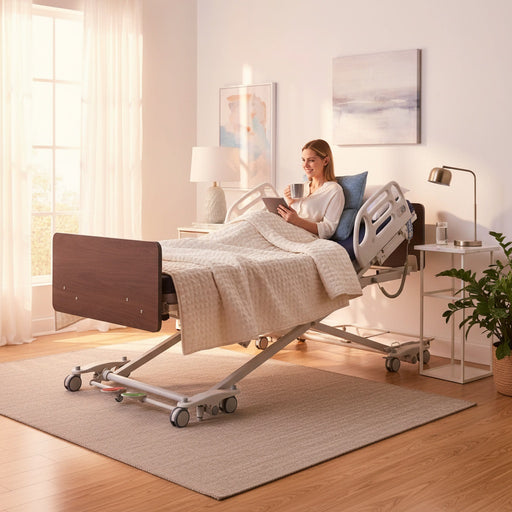
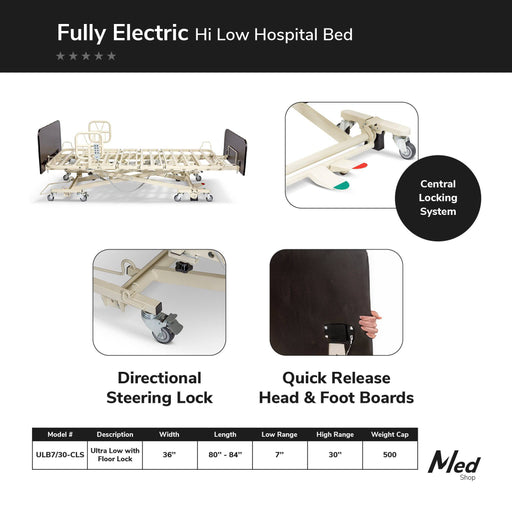
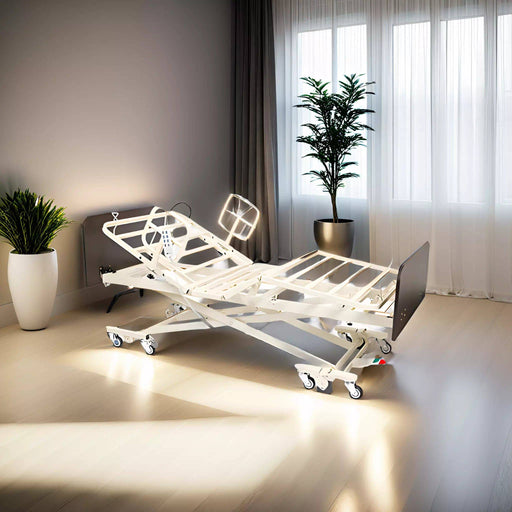


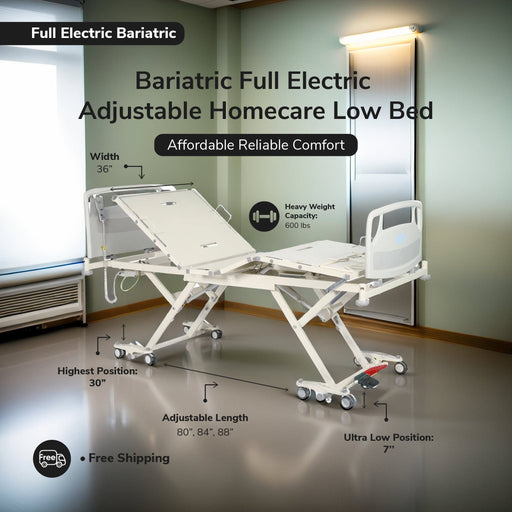
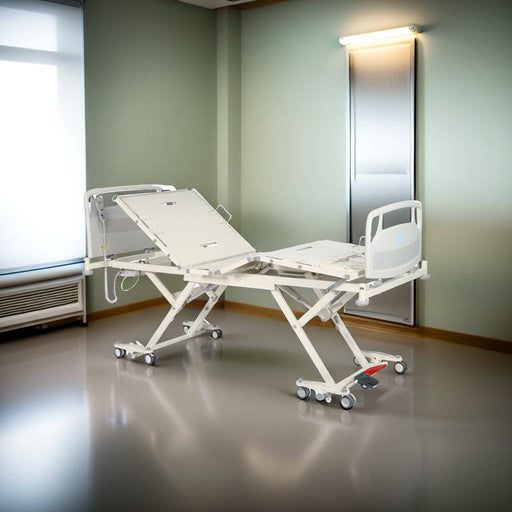
Leave a comment